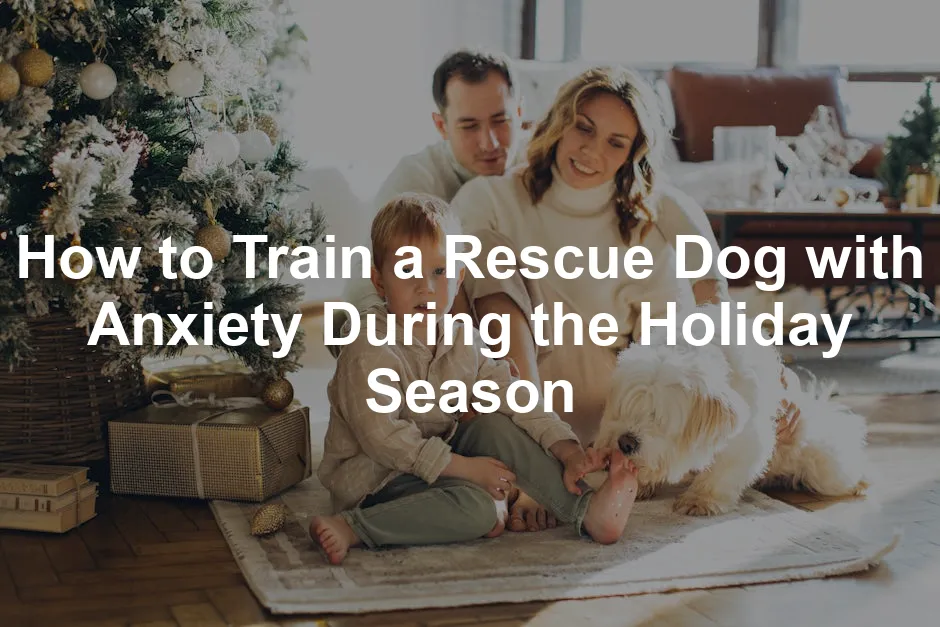Here are major signs of anxiety to monitor:
- Shaking or trembling
- Hiding or seeking solitude
- Excessive barking or whining
- Pacing or restlessness
- Aggression or growling
- Destructive behavior
- Loss of appetite or avoidance of food
- Excessive licking or chewing on themselves
Being aware of these behavioral signs allows you to provide the support your dog needs. During the busy holiday season, monitor your dog’s behavior closely to ensure they feel secure and calm. After all, a little pampering goes a long way! Consider adding some Dog Chew Toys to your shopping cart!
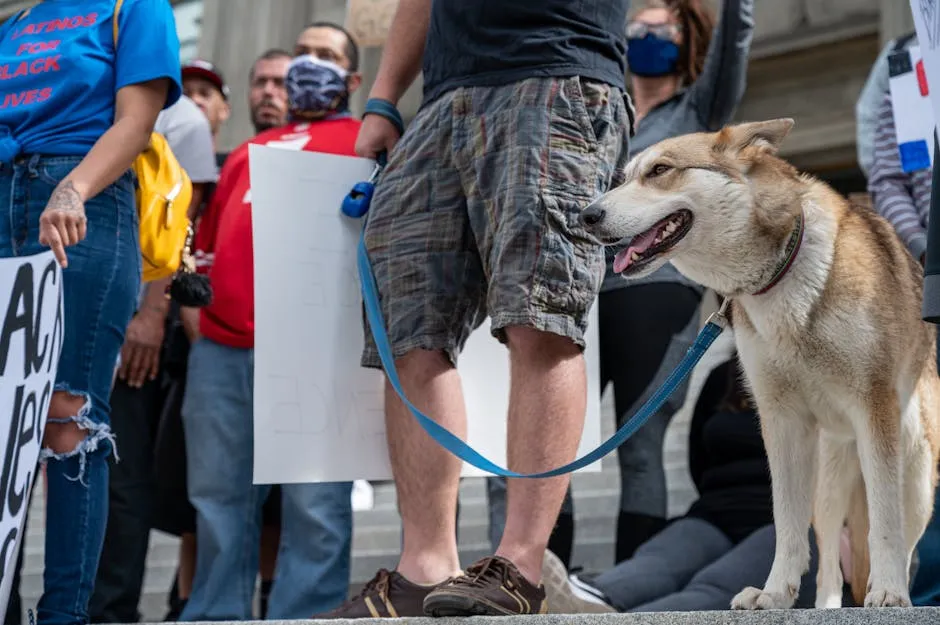
Best Practices for Training a Rescue Dog
Establishing a Routine
Maintaining a consistent schedule for feeding, walking, and training is vital. Dogs thrive on routine, and predictability can significantly reduce anxiety. When your dog knows what to expect, they feel more secure.
To integrate training into daily routines, consider:
- Scheduling short training sessions before meals.
- Incorporating commands during walks.
- Using playtime as a training opportunity.
Keeping your dog’s schedule as normal as possible will help them navigate the holiday chaos more comfortably. And don’t forget to stock up on Dog Training Treats for those training sessions!
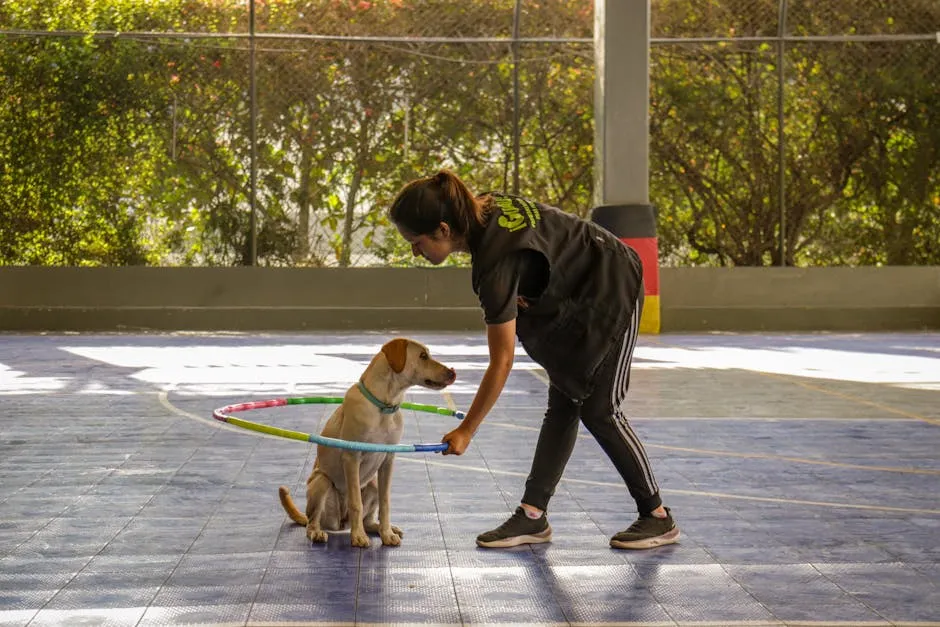
Gradual Exposure to Holiday Stimuli
Desensitization and counter-conditioning are effective techniques for helping anxious dogs. Gradual exposure to holiday sounds, sights, and people can reduce their anxiety. Start by introducing low-volume recordings of holiday noises, like bells or fireworks.
Reward calm behaviors with treats or praise. This positive reinforcement helps your dog associate holiday stimuli with good experiences. For more on effective positive reinforcement techniques, check out this article on effective positive reinforcement techniques for stubborn dogs.
Using positive reinforcement can greatly enhance your dog’s training experience. Learn more about it here.
Practice these techniques before holiday gatherings to ensure your dog feels more comfortable during the festivities. And speaking of comfort, a Calming Dog Jacket can work wonders!
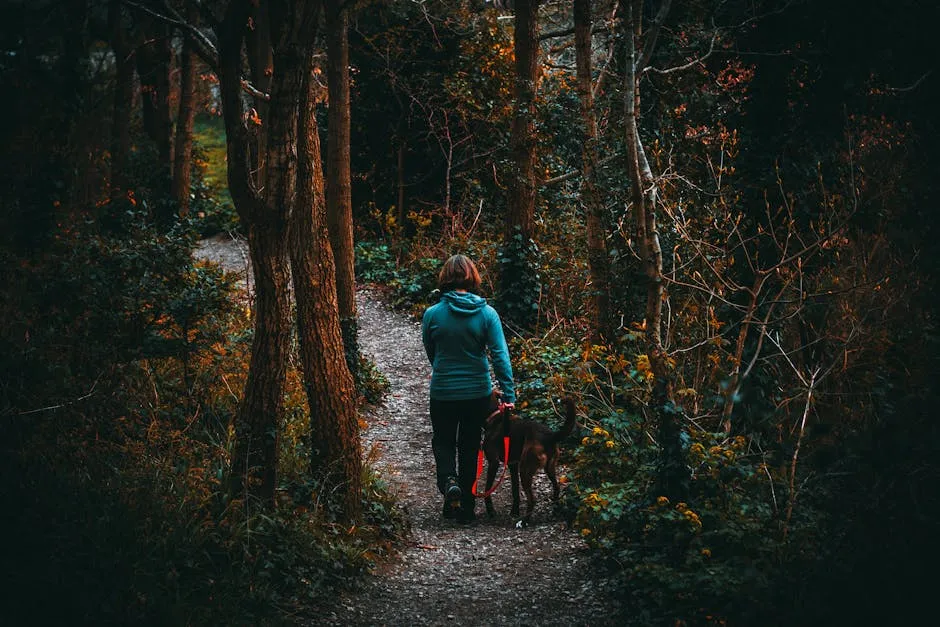
Providing a Safe Space
The holiday season can be overwhelming for anxious dogs. That’s why it’s essential to create a designated quiet area for your furry friend. This safe space will help your dog feel secure amidst the festivities.
Start by selecting a quiet room away from the noise. Make it cozy with familiar bedding and toys. Adding a few of your dog’s favorite items will make it feel more like home. The familiar scents will comfort them during busy times.
Consider using calming aids in this space. Pheromone diffusers can create a soothing atmosphere. Playing calming music can also help drown out festive sounds that may trigger anxiety. Together, these elements work to create a calming environment. Don’t forget to try out some Dog First Aid Kit just in case!
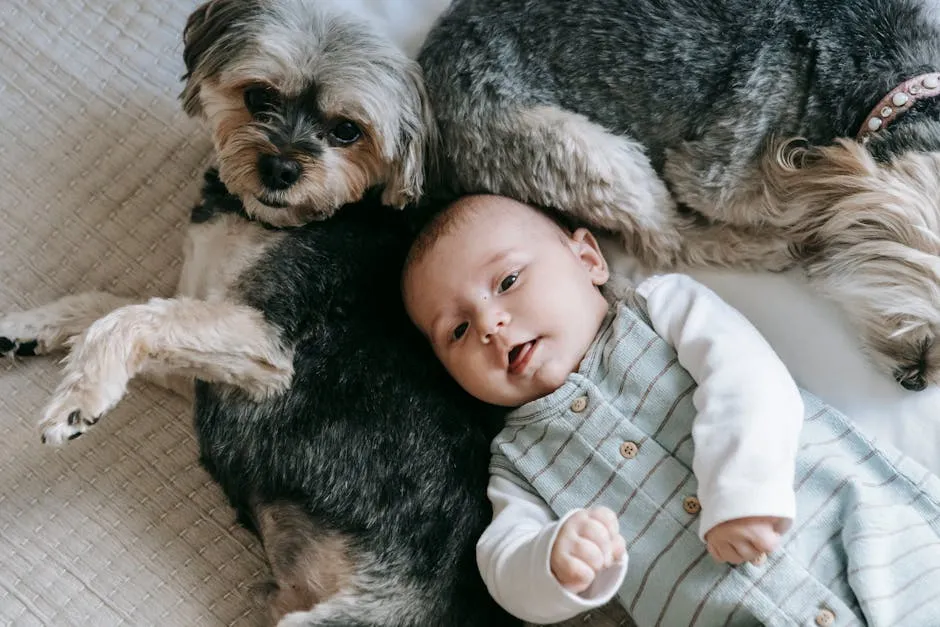
Managing Stress During Festivities
Preparing for Visitors
As guests arrive, it’s important to prepare your dog for interactions. Gradual introductions can help lessen anxiety. Start by allowing your dog to observe guests from a distance. This creates a less intimidating environment.
Use treats as a positive reinforcement tool. When your dog remains calm, reward them with treats. This encourages good behavior and builds a positive association with guests. It’s important to educate your visitors about your dog’s needs. Inform them to approach slowly and avoid overwhelming your dog.
Don’t hesitate to put a leash on your dog during initial introductions. This allows you to control the situation better. Encourage your guests to ignore your dog until they feel comfortable approaching. This creates a more relaxed atmosphere for everyone.
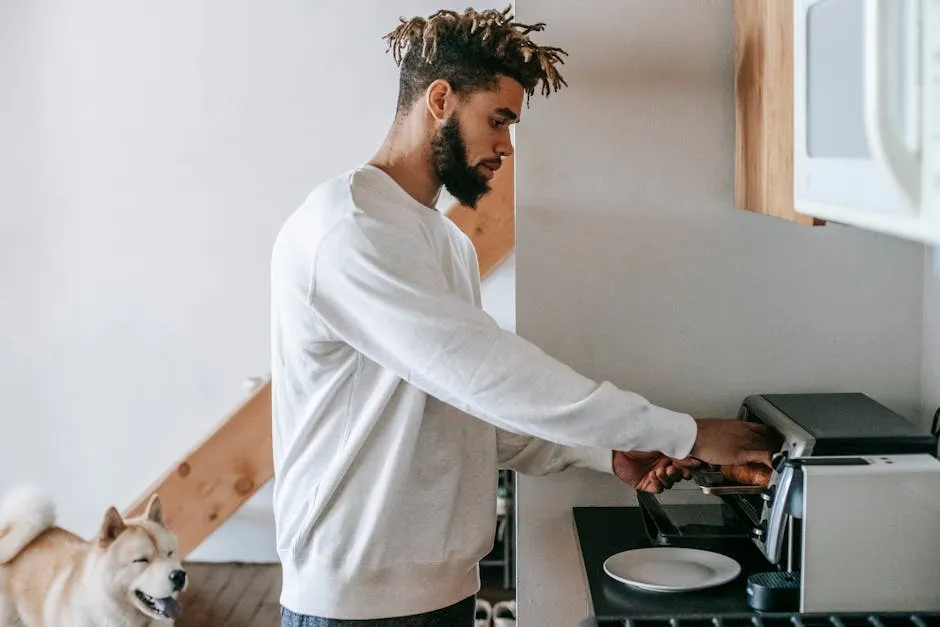
Maintaining Exercise and Mental Stimulation
Regular exercise plays a vital role in reducing anxiety. Ensure your dog gets enough physical activity during the holiday season. Even short walks can help burn off excess energy and keep them calm.
Incorporate mental stimulation activities, too. Puzzle toys can keep your dog engaged while you attend to holiday tasks. For a list of the best puzzle toys, check out this article on best puzzle toys for keeping dogs mentally stimulated. Plus, you can always add a Dog Grooming Brush for some quality bonding time!
Engaging your dog with puzzle toys can be a great way to provide mental stimulation. Discover the best options here.
Physical activity is essential during busy holiday times. Prioritizing exercise in your schedule is a win-win. It benefits your dog and helps you manage your own stress levels. Make it a point to include these activities in your holiday plans for a happier, calmer dog. And remember, keeping your dog hydrated is key! A Portable Dog Water Bottle is a must-have for outings!
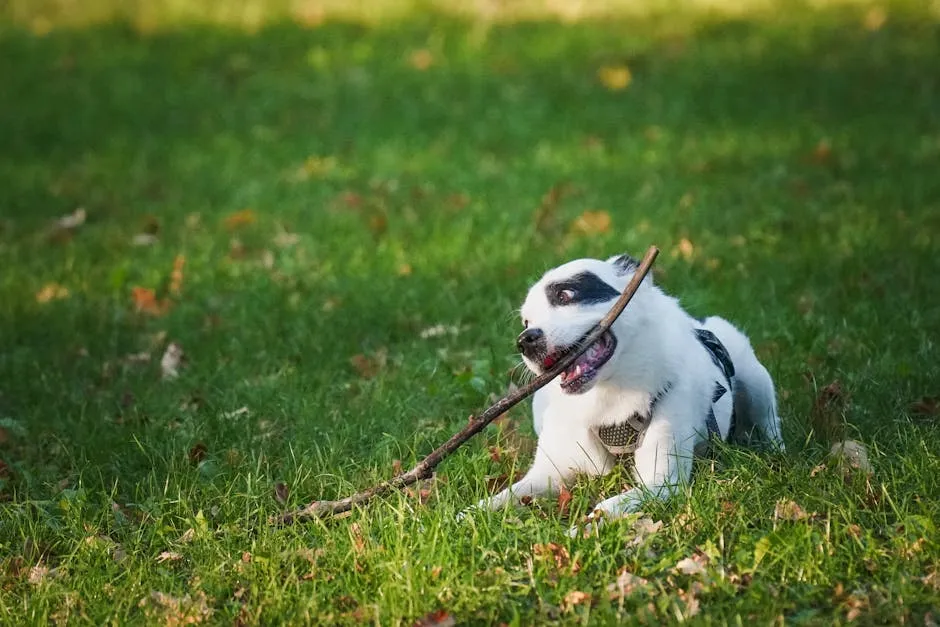
Utilizing Training Techniques
Training techniques can significantly help manage your rescue dog’s anxiety, especially during the holiday season. Start with basic commands like “sit,” “stay,” and “come.” These commands not only improve obedience but also create a sense of security. They help your dog understand what’s expected in hectic situations.
Positive reinforcement is crucial. Reward your dog with treats or praise for calm behavior. This builds a positive association with training and encourages your dog to repeat those behaviors. Consistency in your approach reinforces learning. Regular practice helps your dog feel more secure and confident.
Training together can also strengthen your bond. Set aside time for short, fun training sessions. This gives your dog a chance to focus on you amid holiday chaos. Plus, it’s a great way to alleviate your dog’s stress. Engage in playful training exercises to distract them from overwhelming stimuli. Don’t forget to grab a Dog Training Clicker to make training even easier!
Try new training exercises during the holidays. Experiment with tricks or agility tasks. This keeps your dog mentally stimulated and helps them cope with the season’s excitement. You can even set up some Dog Agility Training Equipment for extra fun!
Invite readers to try these engaging training exercises with their dogs. You might be surprised at how much it benefits both of you!
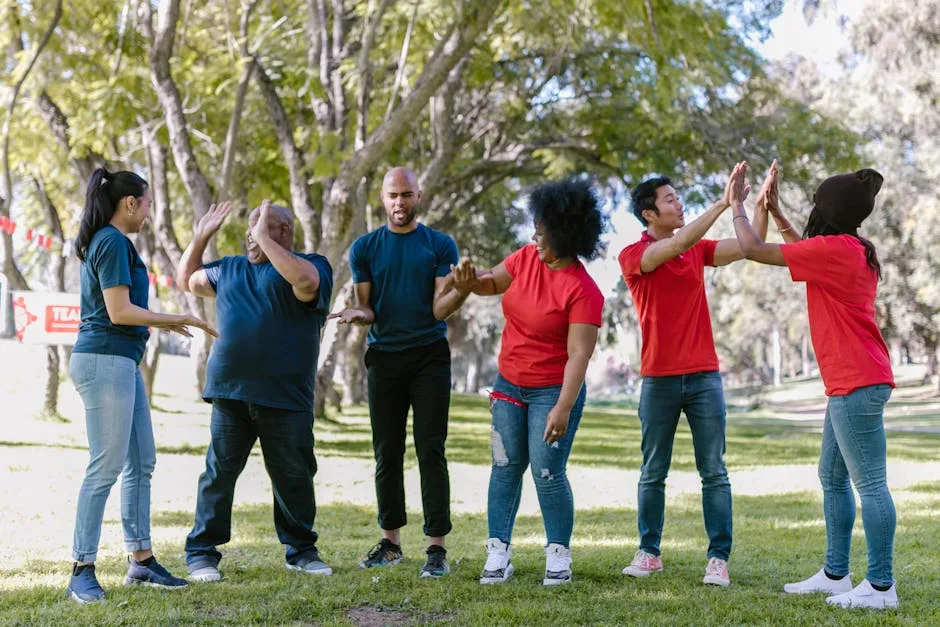
Seeking Professional Help
When to Consult a Trainer or Veterinarian
Sometimes, professional help is necessary for dogs with severe anxiety. If your dog shows signs of distress that don’t improve, it may be time to consult a trainer or veterinarian. Look for signs of anxiety such as excessive barking, trembling, or destructive behavior.
During consultations, expect a tailored plan. A professional trainer can provide specific training techniques suited to your dog’s needs. A veterinarian can assess your dog’s health and may suggest medications for anxiety, if needed.
It’s essential to understand that every dog is unique. A behaviorist can offer valuable insights into your dog’s specific triggers. This personalized advice can greatly enhance your approach to managing their anxiety. Don’t forget to have a Dog First Aid Manual on hand for emergencies!
Don’t hesitate to reach out for help. If you notice your dog struggling, seeking professional guidance can make a difference.
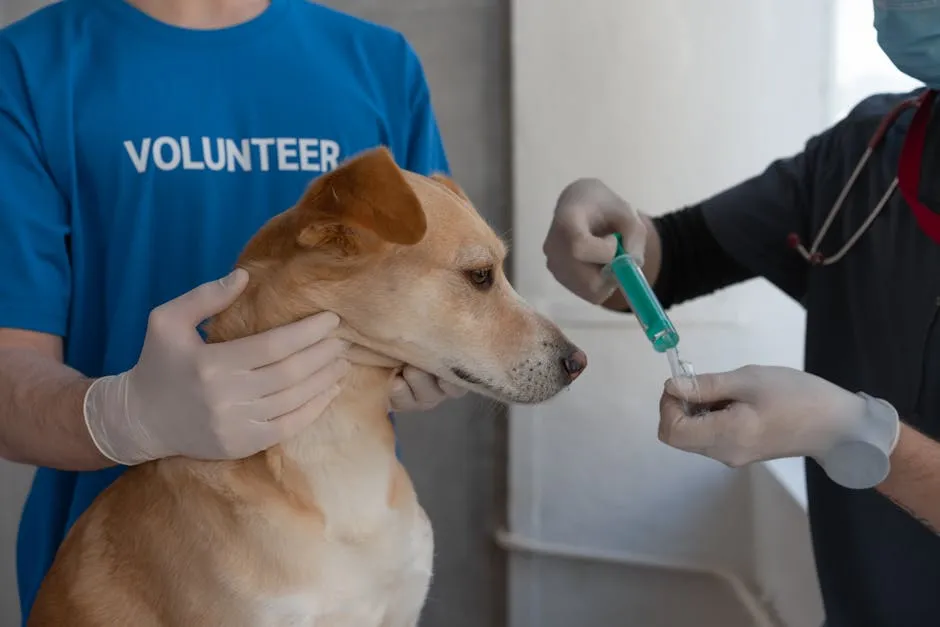
Conclusion
Understanding and managing anxiety in rescue dogs is crucial, especially during the holiday season. The festivities can introduce new stressors that may overwhelm your furry friend. However, with proper preparation, consistency, and training, dogs can enjoy the holidays just like we do. It’s essential to approach this busy time with empathy and patience. Remember, your dog relies on you for support. By creating a calm environment and sticking to routines, you can help them navigate the holiday chaos. Let’s ensure our rescue dogs feel safe and loved while we celebrate this special time of year. To add a little festive flair to your pup’s life, consider picking up some Dog-Themed Holiday Decorations!
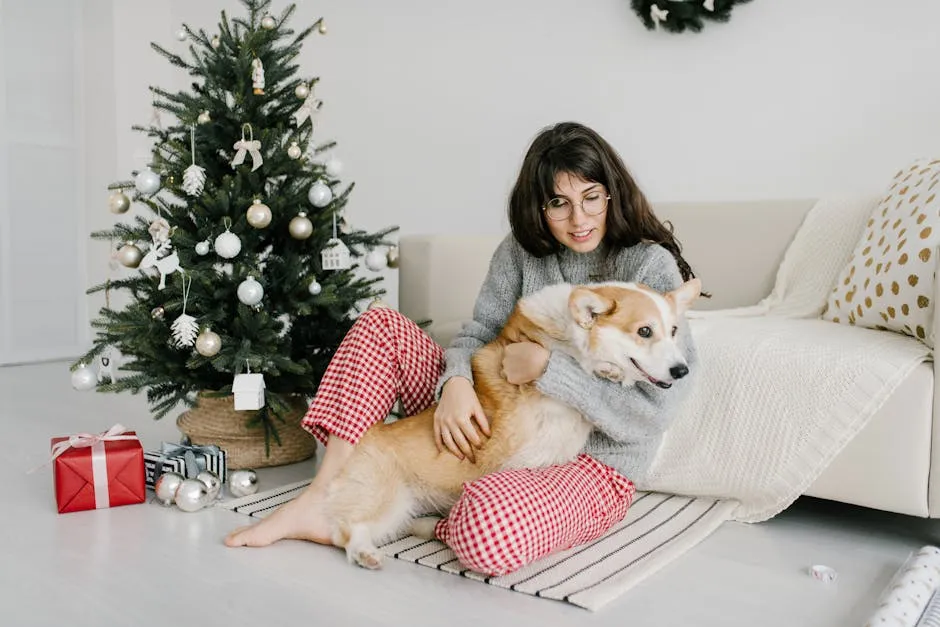
FAQs
How can I tell if my rescue dog is anxious during holiday gatherings?
Look for signs like panting, hiding, or aggressive behavior. Other indicators include excessive barking, pacing, or refusing to eat. These behaviors often signal discomfort. Monitoring your dog’s reactions during gatherings helps you identify when they need a break.
Are there specific training techniques that help reduce anxiety in rescue dogs?
Yes! Techniques like desensitization and positive reinforcement are effective. Gradually exposing your dog to anxiety-inducing stimuli while rewarding them for calm behavior can help them adjust better. This approach builds confidence and reduces fear over time.
What should I do if my dog becomes overwhelmed by guests?
If your dog seems overwhelmed, provide a safe space where they can retreat. This area should be quiet and comfortable, equipped with their favorite toys. If needed, remove your dog from stressful situations for their well-being.
Can medication help with my dog’s anxiety during the holidays?
Consulting a veterinarian can be beneficial. They can recommend anxiety medications or calming aids tailored to your dog’s needs. Always seek professional advice before trying new treatments, especially during busy times.
How can I maintain my dog’s routine during the holiday season?
Consistency is key. Stick to regular feeding, walking, and training schedules as much as possible. This predictability helps your dog feel secure and less anxious amid holiday chaos.
Is it safe to introduce my anxious dog to new people during the holidays?
Yes, but do it gradually. Monitor your dog’s comfort level throughout the process. Encourage gentle introductions and allow your dog to approach new people at their own pace.
What are some calming strategies I can use for my dog during festivities?
Consider playing calming music, using pheromone diffusers, or creating a quiet retreat for your dog. These strategies help create a soothing environment, making it easier for your dog to relax during holiday celebrations.
Please let us know what you think about our content by leaving a comment down below!
Thank you for reading till here 🙂
All images from Pexels
Introduction
Training a rescue dog with anxiety can be challenging, especially during the holidays. Festive activities and gatherings can heighten stress for anxious dogs. In this article, we’ll share practical methods for managing training and anxiety to ensure your furry friend feels secure and loved throughout this busy season. And hey, why not pamper your pup with a Calming Dog Bed? After all, a comfy dog is a happy dog!
Summary and Overview
Anxiety in rescue dogs is common and can significantly affect their behavior. During the holiday season, unique stressors arise. These include loud noises, unfamiliar visitors, and changes in routine. It’s crucial for pet owners to understand these factors and prepare accordingly. By being proactive, you can help your dog cope better with the holiday hustle and bustle. This article aims to provide effective training methods and strategies to alleviate anxiety, ensuring both you and your dog can enjoy the festivities. If your pup is dealing with anxiety, consider using a Dog Anxiety Relief Pheromone Diffuser to create a calming atmosphere!

Understanding Dog Anxiety
What is Dog Anxiety?
Dog anxiety refers to a dog’s overwhelming fear or stress in certain situations. Common causes include loud noises, unfamiliar environments, or separation from owners. The holiday season often introduces specific triggers, such as fireworks, crowded spaces, and new people. Statistics suggest that 30% of rescue dogs experience anxiety. Recognizing these stressors is essential for effective management.
Take a moment to assess your dog’s behavior. Are there signs of anxiety? Identifying your dog’s triggers will help you create a supportive environment for them. If you want to keep your dog entertained while you manage the holiday chaos, an Interactive Dog Puzzle Toy can be a lifesaver!
Signs of Anxiety in Dogs
Recognizing anxiety in dogs is crucial for their well-being. Anxiety can manifest in various ways. Some common signs include shaking, hiding, and excessive barking. Understanding these signs helps you respond effectively to your dog’s needs.
Here are major signs of anxiety to monitor:
- Shaking or trembling
- Hiding or seeking solitude
- Excessive barking or whining
- Pacing or restlessness
- Aggression or growling
- Destructive behavior
- Loss of appetite or avoidance of food
- Excessive licking or chewing on themselves
Being aware of these behavioral signs allows you to provide the support your dog needs. During the busy holiday season, monitor your dog’s behavior closely to ensure they feel secure and calm. After all, a little pampering goes a long way! Consider adding some Dog Chew Toys to your shopping cart!

Best Practices for Training a Rescue Dog
Establishing a Routine
Maintaining a consistent schedule for feeding, walking, and training is vital. Dogs thrive on routine, and predictability can significantly reduce anxiety. When your dog knows what to expect, they feel more secure.
To integrate training into daily routines, consider:
- Scheduling short training sessions before meals.
- Incorporating commands during walks.
- Using playtime as a training opportunity.
Keeping your dog’s schedule as normal as possible will help them navigate the holiday chaos more comfortably. And don’t forget to stock up on Dog Training Treats for those training sessions!

Gradual Exposure to Holiday Stimuli
Desensitization and counter-conditioning are effective techniques for helping anxious dogs. Gradual exposure to holiday sounds, sights, and people can reduce their anxiety. Start by introducing low-volume recordings of holiday noises, like bells or fireworks.
Reward calm behaviors with treats or praise. This positive reinforcement helps your dog associate holiday stimuli with good experiences. For more on effective positive reinforcement techniques, check out this article on effective positive reinforcement techniques for stubborn dogs.
Using positive reinforcement can greatly enhance your dog’s training experience. Learn more about it here.
Practice these techniques before holiday gatherings to ensure your dog feels more comfortable during the festivities. And speaking of comfort, a Calming Dog Jacket can work wonders!

Providing a Safe Space
The holiday season can be overwhelming for anxious dogs. That’s why it’s essential to create a designated quiet area for your furry friend. This safe space will help your dog feel secure amidst the festivities.
Start by selecting a quiet room away from the noise. Make it cozy with familiar bedding and toys. Adding a few of your dog’s favorite items will make it feel more like home. The familiar scents will comfort them during busy times.
Consider using calming aids in this space. Pheromone diffusers can create a soothing atmosphere. Playing calming music can also help drown out festive sounds that may trigger anxiety. Together, these elements work to create a calming environment. Don’t forget to try out some Dog First Aid Kit just in case!

Managing Stress During Festivities
Preparing for Visitors
As guests arrive, it’s important to prepare your dog for interactions. Gradual introductions can help lessen anxiety. Start by allowing your dog to observe guests from a distance. This creates a less intimidating environment.
Use treats as a positive reinforcement tool. When your dog remains calm, reward them with treats. This encourages good behavior and builds a positive association with guests. It’s important to educate your visitors about your dog’s needs. Inform them to approach slowly and avoid overwhelming your dog.
Don’t hesitate to put a leash on your dog during initial introductions. This allows you to control the situation better. Encourage your guests to ignore your dog until they feel comfortable approaching. This creates a more relaxed atmosphere for everyone.

Maintaining Exercise and Mental Stimulation
Regular exercise plays a vital role in reducing anxiety. Ensure your dog gets enough physical activity during the holiday season. Even short walks can help burn off excess energy and keep them calm.
Incorporate mental stimulation activities, too. Puzzle toys can keep your dog engaged while you attend to holiday tasks. For a list of the best puzzle toys, check out this article on best puzzle toys for keeping dogs mentally stimulated. Plus, you can always add a Dog Grooming Brush for some quality bonding time!
Engaging your dog with puzzle toys can be a great way to provide mental stimulation. Discover the best options here.
Physical activity is essential during busy holiday times. Prioritizing exercise in your schedule is a win-win. It benefits your dog and helps you manage your own stress levels. Make it a point to include these activities in your holiday plans for a happier, calmer dog. And remember, keeping your dog hydrated is key! A Portable Dog Water Bottle is a must-have for outings!

Utilizing Training Techniques
Training techniques can significantly help manage your rescue dog’s anxiety, especially during the holiday season. Start with basic commands like “sit,” “stay,” and “come.” These commands not only improve obedience but also create a sense of security. They help your dog understand what’s expected in hectic situations.
Positive reinforcement is crucial. Reward your dog with treats or praise for calm behavior. This builds a positive association with training and encourages your dog to repeat those behaviors. Consistency in your approach reinforces learning. Regular practice helps your dog feel more secure and confident.
Training together can also strengthen your bond. Set aside time for short, fun training sessions. This gives your dog a chance to focus on you amid holiday chaos. Plus, it’s a great way to alleviate your dog’s stress. Engage in playful training exercises to distract them from overwhelming stimuli. Don’t forget to grab a Dog Training Clicker to make training even easier!
Try new training exercises during the holidays. Experiment with tricks or agility tasks. This keeps your dog mentally stimulated and helps them cope with the season’s excitement. You can even set up some Dog Agility Training Equipment for extra fun!
Invite readers to try these engaging training exercises with their dogs. You might be surprised at how much it benefits both of you!

Seeking Professional Help
When to Consult a Trainer or Veterinarian
Sometimes, professional help is necessary for dogs with severe anxiety. If your dog shows signs of distress that don’t improve, it may be time to consult a trainer or veterinarian. Look for signs of anxiety such as excessive barking, trembling, or destructive behavior.
During consultations, expect a tailored plan. A professional trainer can provide specific training techniques suited to your dog’s needs. A veterinarian can assess your dog’s health and may suggest medications for anxiety, if needed.
It’s essential to understand that every dog is unique. A behaviorist can offer valuable insights into your dog’s specific triggers. This personalized advice can greatly enhance your approach to managing their anxiety. Don’t forget to have a Dog First Aid Manual on hand for emergencies!
Don’t hesitate to reach out for help. If you notice your dog struggling, seeking professional guidance can make a difference.

Conclusion
Understanding and managing anxiety in rescue dogs is crucial, especially during the holiday season. The festivities can introduce new stressors that may overwhelm your furry friend. However, with proper preparation, consistency, and training, dogs can enjoy the holidays just like we do. It’s essential to approach this busy time with empathy and patience. Remember, your dog relies on you for support. By creating a calm environment and sticking to routines, you can help them navigate the holiday chaos. Let’s ensure our rescue dogs feel safe and loved while we celebrate this special time of year. To add a little festive flair to your pup’s life, consider picking up some Dog-Themed Holiday Decorations!

FAQs
Please let us know what you think about our content by leaving a comment down below!
Thank you for reading till here 🙂
All images from Pexels

